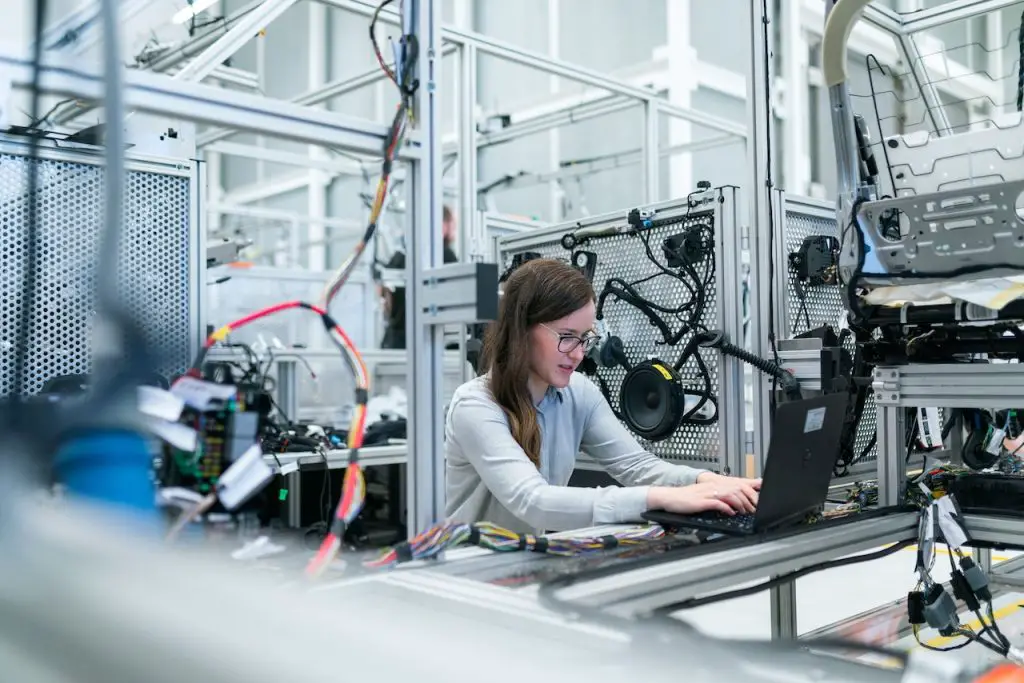Technology’s impact cuts across almost every part of our daily lives, including education. Digital tools have expanded access to learning. They let individuals enjoy the learning process at the click of a button. Online MOOCs promote distance learning, while innovations promote collaboration. The development of technology in education is revolutionizing the roles of professors and students. Teachers are the primary information source in a traditional classroom. Today, they act as guardians while students take responsibility for their learning. But despite its benefits, to what extent has technology improved the educational system? What are the side effects, and do they outweigh the advantages? Our article will delve into how technology is changing education point-by-point.
How Technology is Improving the Education Industry
There are various ways technology is shaping the education industry. Some key tools at the heart are:
- Learning management systems.
- Online learning platforms.
- Virtual reality (VR) and Augmented Reality (AR).
- Collaboration tools.
- Video conferencing apps.
- Educational applications.
- Adaptive learning software.
- Gamification tools.
- Online assessment and feedback design.
- Data and learning analytics.
- Cloud computing.
How is technology changing the face of education? Technology is altering how students learn and teachers instruct. The routine classroom experience bore them and was tiresome for them. But thanks to activity-based initiatives, participants show a higher interest level. Below are some popular ways improvements in education system alter the learning ecosystem.
Improved Communication and Interconnectedness
Communication is vital to learning. The use of modern technology in education has bridged the gap and smoothened the knowledge flow. Virtual classrooms allow individuals to collaborate or form a community. Tutors assign projects, and undergraduates ask for real-time clarification. Apart from this, it helps students who find it intimidating to talk in front of the class. Online classes encourage participation. Learners collaborate through activities, fostering a sense of belonging.
Digital innovations help parents stay on top of their children’s academic progress. Schools use them to give updates on grades, attendance, and classroom behavior. As well, guardians can reach out through the school’s learning management system.
Simplifies Essay Writing and Homework
Technology puts information at our fingertips. Students access extensive online databases, conduct research, or read articles. Apart from learners, parents struggling to help with homework use learning sites. The websites provide step-by-step tutorials on classroom subjects. They further clarify where they went wrong and give examples for practicing.
Text editors like Google Docs make writing and editing easy. Undergraduates check spelling and grammar, format documents, and network with peers or teachers. Furthermore, online platforms facilitate document sharing to promote collaboration. Those with heavy workloads may opt to find a website that writes an essay for you to free their schedule and avoid looming deadlines. An online paper writing service uses subject-matter experts to write high-quality essays and deliver them on schedule. The websites adopt AI plagiarism detection software to ensure originality. Beyond essay help, students use these generators to improve their writing skills.
Simulation and Modelling
Software and programs help students put theory into practice. For example, simulation devices provide an idea of how dinosaurs lived. VR tools offer immersive experiences that promote enjoyable learning. Apart from this, they can grasp complex concepts and retain lectures better.
Automation Increases Efficiency
Tech allows educators and institutions to automate manual tasks. Digital tools track, grade, schedule, and keep student records. Tutors use online quizzes, automated grading systems, and data analytics to give feedback. Plus, adaptive learning platforms use algorithms to test students’ knowledge. With this, they forward customized feedback. Teachers use them to know where ones are struggling and adjust pedagogical methods.
The Positive and Negative Aspects of Technology on Education
Technology enhances learning in many ways. However, it is not without some drawbacks. Check out how technology helps in education and its disadvantages below:
Access to Information
Technology provides access to vast educational resources. It helps students expand their knowledge and explore subjects beyond traditional classroom materials. Interactive multimedia, simulations, and VR devices help learners understand complex topics and stay motivated.
Personalized Learning
Adaptive tech helps institutions match each student’s pace, needs, and learning style. They’re attending remote schools, plan their schedules and learn at a convenient time. Plus, they further pursue courses outside their curriculum to broaden their knowledge. Teachers use data generated by their online activities to identify struggling scholars.
Accessibility and Inclusion
Technological development in education increases accessibility for students with disabilities. Assistive techs aid learners with visual or hearing impairments. They include:
- Captioning tools.
- Speech recognition software.
- Screen readers, etc.
The solutions allow special needs students to partake in the learning process. Besides, online learning platforms offer access irrespective of physical restrictions. Individuals can take classes in diff countries without leaving their homes. It eliminates the traveling cost and other inconveniences.
Technology serves various purposes, but it also has the potential for negative use. This is why some teachers are not keen on using it. Unlike students, older generations need to train themselves to use tech ideas. As a result, they prefer to stick to simple blackboards. Other disadvantages that critics voice include:
An Avenue for Distraction
Phones, laptops, and other digital devices make it challenging to focus on class. After all, it takes a click to move from studying to surfing pictures on Instagram. These entertainments divert attention from learning. Tech over-reliance hinders a student’s ability to develop critical thinking skills. They depend on their gadgets, reducing their capacity to solve problems.
Inequality of Access and Cost
Not all students have equal access to high-speed internet connections and devices. This creates a disparity in opportunities and hinders them from poor communities. In addition, technology evolves fast. A new phone can become obsolete in a few months. To keep up with the trend, undergraduates spend on costly purchases. Also, the expenses may create problems for schools with limited resources.
Privacy and Security Concerns
This is the biggest drawback of using technology in schools. Unauthorized access can lead to misuse of personal data and academic records. Besides, there is no way to control the sites students access. Teachers will never know what they watch, learn, or discuss.
Technology’s Role in Education
Technology can be used for positive and negative purposes. In other words, it depends on how it is utilized. Technology aids educational institutions and provides access to diverse materials. It further assists learners in improving their communication skills. Technological innovations in education promote a fun teaching experience. With this, students learn new skills and acquire new knowledge. Furthermore, they improve mentally, and tech introduces more teachers to the classroom. Still, stakeholders must approach innovation from a critical and balanced perspective. We must recognize and address its potential drawbacks to mitigate the negative consequences.












